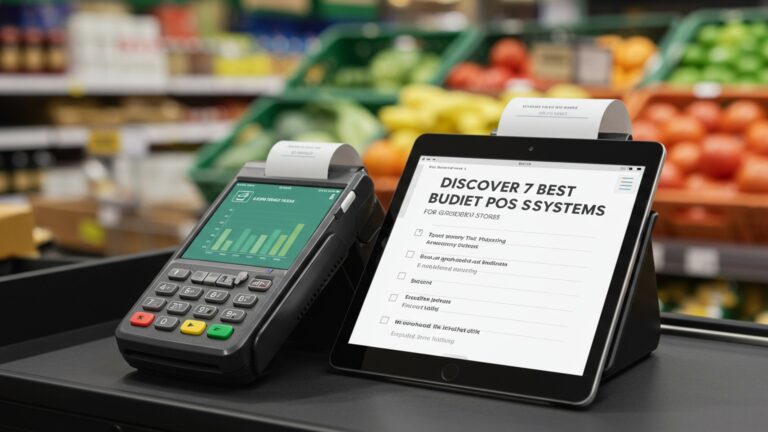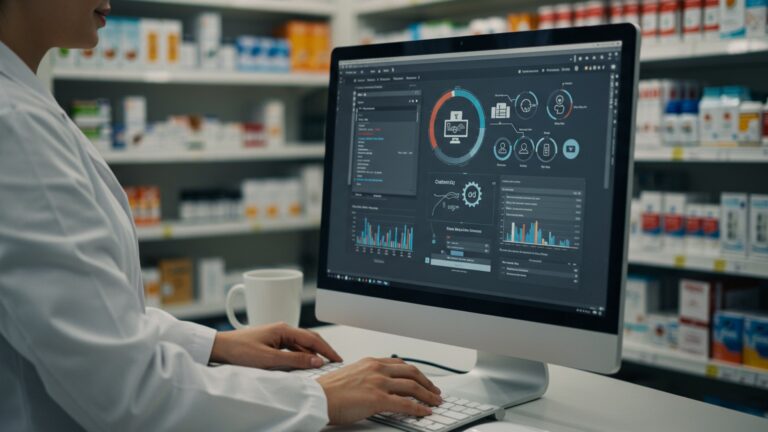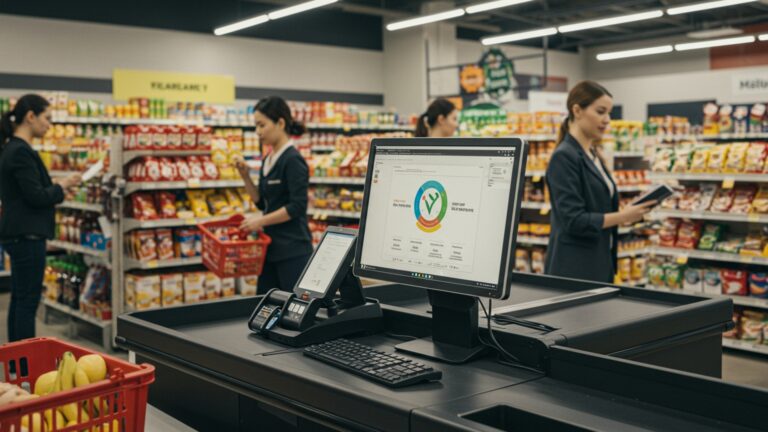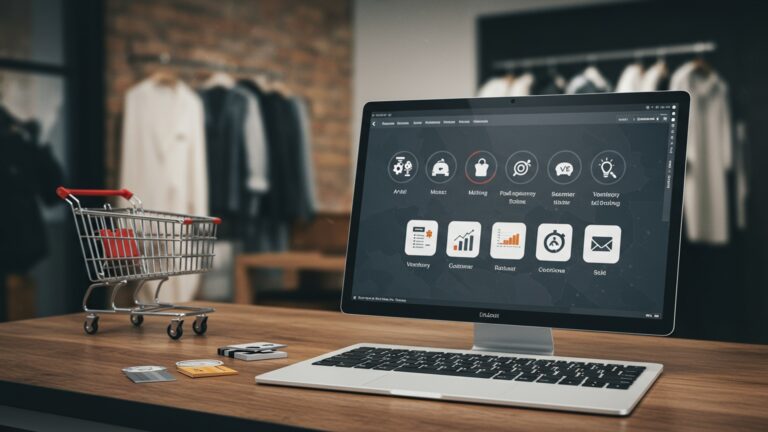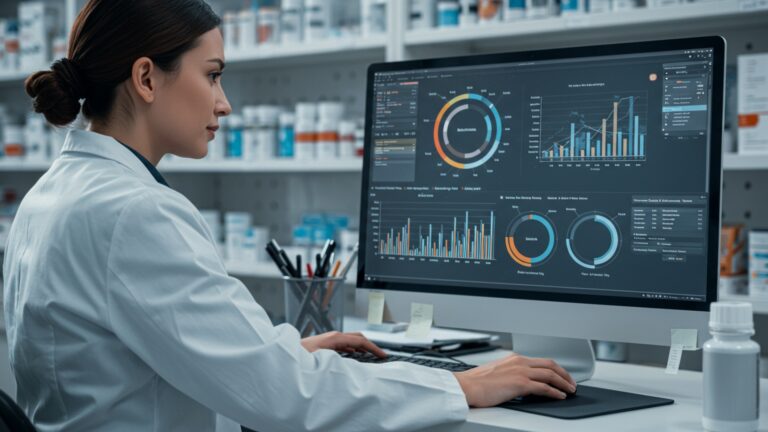Learn 7 Ways the Best POS System Transforms Your Garment Shop Operations
In today’s fiercely competitive fashion landscape, managing a garment shop demands more than just stylish inventory; it requires precision, speed. deep customer understanding. Retailers grapple with complex SKU matrices across sizes, colors. designs, alongside the demand for seamless omnichannel experiences and rapid trend adaptation. A truly transformative solution isn’t merely a cash register; it’s the best POS system for garment shop operations, integrating advanced features like AI-powered inventory forecasting to minimize dead stock, sophisticated CRM for hyper-personalized customer engagement. real-time sales analytics. This robust technology streamlines everything from dynamic pricing adjustments to efficient returns processing, ensuring your business not only keeps pace but also proactively shapes its success by leveraging actionable insights to optimize every stitch of your retail journey.
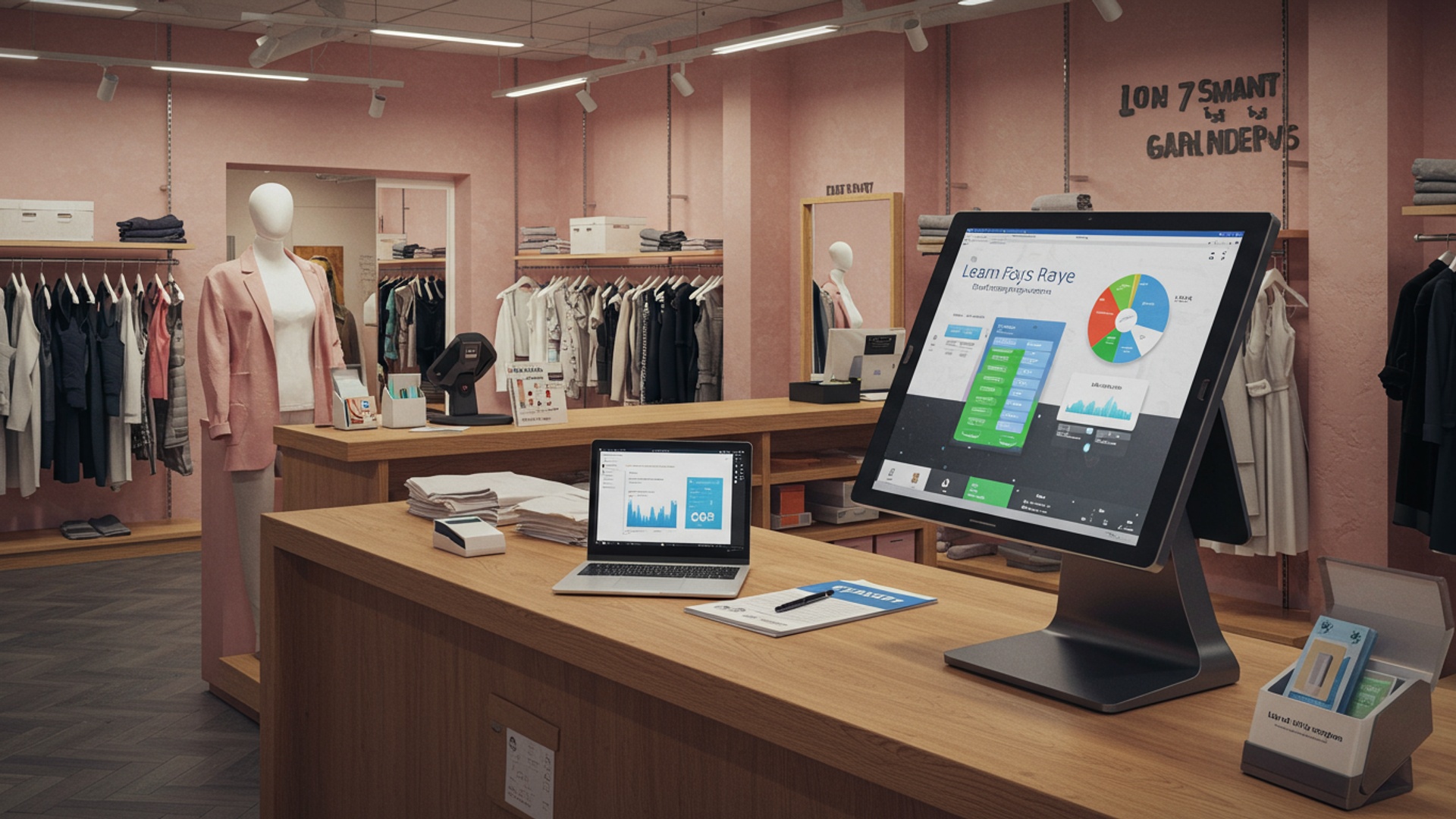
1. Revolutionizing Sales and Checkout Efficiency
In the fast-paced world of fashion retail, customer experience at the checkout counter can make or break a sale. The best POS system for garment shop operations transforms this critical touchpoint, moving beyond a simple cash register to a sophisticated hub for transactions.
What is a POS System?
A Point-of-Sale (POS) system is essentially the hardware and software that processes transactions at your retail location. For a garment shop, this means handling sales, returns, exchanges. often much more. It’s the central nervous system for your store’s financial interactions.
How it Boosts Efficiency:
- Speedy Transactions: Imagine a busy Saturday. With an intuitive POS, your staff can quickly scan items, apply discounts. process payments. This significantly reduces customer wait times, preventing long queues and potential lost sales.
- Accuracy in Pricing: Manual price entry is prone to errors. A modern POS automatically retrieves product prices from your database, ensuring customers are charged correctly every time. This builds trust and minimizes discrepancies.
- Diverse Payment Options: From credit cards and mobile payments to gift cards and loyalty points, the best POS system for garment shop businesses supports a wide array of payment methods, catering to every customer’s preference.
- Simplified Returns and Exchanges: Handling returns can be cumbersome. A robust POS system allows for quick lookup of past transactions, making returns, exchanges, or store credit issuance seamless and hassle-free, turning a potential negative experience into a positive one.
Take the example of “Thread & Style,” a boutique that struggled with manual pricing and slow checkouts. Implementing a modern POS system reduced their average transaction time by 30%, leading to a noticeable improvement in customer satisfaction scores and a decrease in end-of-day reconciliation errors.
2. Masterful Inventory Management and Stock Control
For garment shops, inventory is everything. Mismanaging stock leads to either overstocking (tying up capital) or understocking (missing sales opportunities). The best POS system for garment shop owners offers unparalleled control over their merchandise.
Key Aspects of POS Inventory Management:
- Real-Time Tracking: Every sale, return, or transfer is instantly updated in the system. This means you always know exactly what you have in stock, down to specific sizes, colors. styles across multiple store locations.
- Automated Stock Alerts: Configure minimum stock levels for popular items. When inventory dips below this threshold, the POS automatically notifies you, prompting timely reorders and preventing stockouts of your bestsellers.
- Vendor Management: Keep track of supplier details, purchase orders. receiving history directly within the POS. This streamlines the procurement process and helps identify reliable vendors.
- Barcode Generation and Scanning: Modern POS systems can generate and print barcodes for un-barcoded items, or integrate with existing barcodes. Scanning at every stage – receiving, selling, returning – ensures accuracy and efficiency.
- Multi-Location Inventory: If you have more than one store, a cloud-based POS system allows you to manage inventory across all locations from a single dashboard. This enables efficient stock transfers and a consolidated view of your entire business.
Consider “Fashion Forward,” a chain of three clothing stores. Before their integrated POS, transferring stock between stores was a manual nightmare. Now, with the best POS system for garment shop management, they can see real-time stock levels at each location and execute transfers with a few clicks, ensuring high-demand items are always where they’re needed most. This also helps in identifying slow-moving items for strategic markdowns.
3. Cultivating Customer Loyalty with Integrated CRM
Building a loyal customer base is crucial for any garment shop. A robust POS system extends beyond transactions to act as a powerful Customer Relationship Management (CRM) tool, helping you grasp and engage with your clientele like never before.
How POS Enhances Customer Relationships:
- Detailed Purchase History: Every customer transaction is recorded, providing insights into their preferences, sizes. buying habits. This allows your staff to offer personalized recommendations, enhancing the shopping experience.
- Loyalty Programs: Easily implement and manage points-based systems, tiered rewards, or member discounts directly through the POS. Customers can earn and redeem points seamlessly, encouraging repeat business.
- Personalized Marketing: Leverage customer data to send targeted promotions, birthday discounts, or exclusive previews of new arrivals. Imagine sending a discount on winter coats specifically to customers who purchased boots last fall.
- Customer Feedback Integration: Some advanced POS systems allow for direct feedback capture at the point of sale, or integrate with survey tools, giving you immediate insights into customer satisfaction.
According to a study by Forrester, companies that excel at customer experience grow revenues faster than their competitors. A well-implemented CRM within the best POS system for garment shop owners can be a significant differentiator. “Style Savvy Boutique” used their POS to track customer preferences. by segmenting their email list based on purchase history, they saw a 15% increase in open rates for promotional emails and a 10% rise in repeat customer visits.
4. Streamlined Employee Management and Productivity
Your staff are the face of your garment shop. The best POS system for garment shop operations empowers your team and simplifies administrative tasks, allowing them to focus more on customer service and sales.
Employee Management Features:
- Time Clock Functionality: Employees can clock in and out directly through the POS, providing accurate records for payroll processing. This eliminates manual timesheets and reduces errors.
- Sales Performance Tracking: Monitor individual employee sales, average transaction values. conversion rates. This data can be used for performance reviews, identifying top performers. pinpointing areas for training.
- Commission Management: Easily calculate commissions based on individual or team sales, product categories, or specific promotions. This transparency motivates staff and simplifies payroll.
- Role-Based Permissions: Assign different access levels to various staff members. For instance, sales associates might only have access to sales and returns, while managers can access inventory, reporting. employee settings. This enhances security and accountability.
By integrating these functions, the best POS system for garment shop environments reduces the administrative burden on managers, allowing them to spend more time on strategic planning and mentoring staff. A store manager at “Urban Threads” noted that the POS’s time clock and sales tracking features saved her at least 5 hours a week in administrative tasks, which she now dedicates to merchandising and staff training, directly impacting store performance.
5. Unlocking Insights with Powerful Reporting and Analytics
Data is the new currency. for garment shops, understanding your sales data is paramount. The best POS system for garment shop businesses provides robust reporting and analytics tools that turn raw data into actionable insights, guiding your business decisions.
Types of Reports and Their Value:
- Sales Reports: comprehend daily, weekly, monthly, or yearly sales trends. Identify peak selling times, most profitable days. the impact of promotions.
- Product Performance Reports: Which items are your bestsellers? Which are slow-moving? These reports help you optimize your inventory, make informed purchasing decisions. plan markdowns.
- Customer Reports: Gain insights into your most loyal customers, their average spend. frequently purchased items. This feeds directly into your CRM strategy.
- Employee Performance Reports: As mentioned, track individual sales, identify training needs. reward top performers.
- Category and Brand Reports: comprehend which clothing categories (e. g. , dresses, denim, accessories) or brands are performing best, helping you refine your product mix.
| Report Type | Key Insight Gained | Actionable Takeaway |
|---|---|---|
| Daily Sales Summary | Peak hours, total revenue, average transaction value. | Optimize staffing schedules, evaluate daily promotions. |
| Product Sell-Through | Fastest/slowest moving items, inventory turnover. | Adjust reorder quantities, plan markdowns for stagnant stock. |
| Customer Purchase Frequency | Identify loyal customers and their buying patterns. | Tailor loyalty rewards, send personalized offers. |
With these insights, a garment shop owner can make data-driven decisions rather than relying on gut feelings. “The Apparel Loft” used their POS analytics to discover that their evening wear sales spiked significantly on Thursdays. They adjusted their window displays and marketing efforts accordingly, leading to a 20% increase in evening wear sales on that day alone. This demonstrates the power of having the best POS system for garment shop analytical needs.
6. Seamless Omnichannel Experience and Online Integration
In today’s retail landscape, customers expect a unified shopping experience, whether they’re in your physical store or browsing online. The best POS system for garment shop businesses facilitates this crucial omnichannel approach.
Connecting Online and Offline:
- Synchronized Inventory: When a customer buys a dress online, the physical store’s inventory updates instantly, preventing overselling. Conversely, an in-store purchase updates your e-commerce stock.
- Click-and-Collect (BOPIS): Allow customers to buy online and pick up in-store. Your POS system can notify staff of new orders, track fulfillment. manage the pickup process efficiently.
- Unified Customer Data: A customer’s online purchase history and loyalty points are accessible in-store. vice versa. This ensures a consistent experience and personalized service across all touchpoints.
- Centralized Order Management: Manage all orders—online, in-store. even phone orders—from a single POS interface. This simplifies order fulfillment and reduces operational complexity.
A study by Harvard Business Review found that omnichannel customers spend more than single-channel customers. “Glamour Garments” integrated their e-commerce platform with their POS. A customer who browsed a specific jacket online but didn’t purchase it later received a targeted email campaign generated by the POS’s CRM, offering a discount on that item. The seamless experience led to a conversion, demonstrating the power of a truly integrated best POS system for garment shop functionality.
7. Enhanced Loss Prevention and Security Measures
Shrinkage – losses due to theft, damage, or errors – can significantly impact a garment shop’s profitability. The best POS system for garment shop operations includes features designed to minimize these losses and enhance overall security.
How POS Systems Prevent Loss:
- Reduced Cash Handling Errors: Automated calculations and integrated payment processing minimize human error in counting change or processing transactions.
- Detailed Transaction Logs: Every sale, return, void. discount is recorded with a timestamp and associated employee, creating a clear audit trail. This helps identify suspicious activity or patterns.
- User Permissions and Access Control: As noted before, limiting access to sensitive functions (like manual discounts or voiding transactions) to authorized personnel prevents internal theft and abuse.
- Inventory Discrepancy Reporting: By comparing physical inventory counts with POS records, discrepancies can be quickly identified, signaling potential theft, damage, or operational errors.
- Integrated Security Features: Many modern POS systems come with built-in data encryption and compliance with PCI Data Security Standards (PCI DSS) to protect sensitive customer payment data, reducing the risk of data breaches.
For “Boutique Chic,” before implementing their advanced POS, they experienced unexplained inventory shortages. After deploying the best POS system for garment shop security, which included detailed transaction logs and restricted discount privileges, they were able to pinpoint a recurring pattern of unauthorized discounts being applied by a specific employee, leading to swift corrective action and a significant reduction in shrinkage. This highlights the critical role of a secure POS in protecting your assets and maintaining financial integrity.
Conclusion
Embracing the right POS system isn’t just an upgrade for your garment shop; it’s a strategic transformation. We’ve explored how such a system can revolutionize everything from managing diverse inventory – think countless SKUs for sizes, colors. designs – to elevating customer experiences with personalized recommendations and loyalty programs. I’ve personally witnessed garment shops transition from manual stock-takes, missing critical sales opportunities on trending silks or festive wear, to having real-time data at their fingertips, enabling them to optimize purchasing and even predict seasonal demands more accurately. My key tip for you is to prioritize a system that offers robust inventory management and integrates seamlessly with any potential online storefront you might have. This omnichannel capability is crucial in today’s retail landscape, ensuring consistent pricing and stock availability whether a customer buys in-store or online. Don’t underestimate the power of data; it’s your secret weapon. By choosing wisely, you’re not just installing software; you’re investing in a more efficient, profitable. future-ready business. Take that first step towards modernizing your operations and watch your garment shop flourish.
More Articles
How to Implement POS Software for Seamless Sales and Inventory Management
Learn 8 Smart Inventory Control Strategies Using POS in India
How to Master Billing and POS Software for Efficient Retail Management
Learn 9 Practical Strategies to Streamline Billing Process and Boost Business Efficiency
FAQs
What can a top POS system actually do for my garment shop?
It revolutionizes everything from managing your stock and tracking sales to handling customers and staff. Think less manual work, more insight. smoother operations overall, freeing you up to focus on growing your business.
How does it help me keep track of all my different clothes, sizes. colors?
A great POS system makes inventory a breeze. It tracks every item, variation (like size, color, style). even location in real-time. No more guessing what’s in stock, scrambling to find a specific size, or dealing with manual spreadsheets.
Can it help me build better relationships with my customers and keep them coming back?
Absolutely! It stores customer purchase history, contact info. preferences. You can use this data to offer personalized promotions, set up loyalty programs. provide a much better, tailored shopping experience, making them feel valued and encouraging repeat visits.
Will this system speed up my checkout process and make sales easier?
Definitely. Modern POS systems are designed for quick and intuitive checkouts. They handle various payment methods, process returns and exchanges smoothly. reduce errors, meaning happier customers, shorter queues. more efficient staff.
How do I know what’s selling well and what’s just sitting there?
It provides detailed reports on sales trends, best-selling items, slow movers. even peak shopping times. This data helps you make smart, informed decisions about what to order, what to put on sale. how to display your merchandise to maximize profits.
What if I have more than one shop or sell online too?
Many advanced POS systems offer multi-store management, letting you oversee inventory and sales across all your locations from one central dashboard. Some even integrate seamlessly with e-commerce platforms, syncing everything between your physical and online presence.
Can it help me manage my team better?
Yes, it can track employee hours, individual sales performance. even help manage commissions. This gives you a clear picture of staff productivity, helps with scheduling. makes payroll processing much simpler and more accurate.

